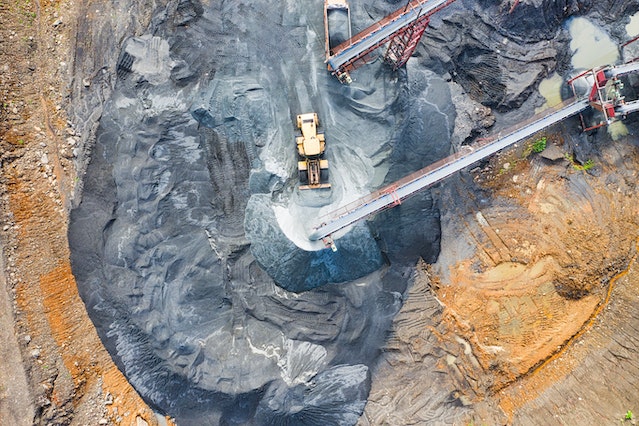
What are rare earth metals? They are a group of 17 elements on the periodic table that are spread out so much in the earth that they are difficult to mine, hence the name “rare”.
There are seventeen rare earth elements, and they all have different uses. Here they are with their uses:
Yttrium – used for ceramics, superconductors, lasers, surgical supplies, and metal alloys.
Lanthanum – used for batteries, night vision goggles, the manufacture of telescope lenses, infrared absorbent glass, and catalysts for petroleum refining.
Cerium – used for chemical catalysts, glass polishing, electrodes, and metal alloys.
Praseodymium – used for high power magnets and yellow ceramic pigment.
Neodymium – used for high power magnets, laser range finders, strong permanent magnets in computer disks, and infrared guidance systems.
Promethium – used as a source for beta radiation.
Samarium – used for high temperature magnets and precision-guidance weapons.
Europium – used for fluorescent lighting.
Gadolinium – used as an MRI contrast agent and in nuclear reactor rods.
Terbium – used for high power high temperature magnets and sonar systems.
Dysprosium – used for high power high temperature magnets, electronics, computer disks, energy efficient vehicles, and lasers.
Holmium – used for strong magnets, in microwaves, and in nuclear control rods.
Erbium – used for lasers and coloring glass.
Thulium – used for ceramic magnets.
Ytterbium – used in fiber optics and in solar panels.
Lutetium – used in PET scanners.
Scandium – used for aluminium alloys, in the manufacture of TVs, energy saving lamps, and semiconductors.
Interestingly, although they are often mistaken as such, lithium and cobalt are not rare earth metals.
Why are rare earth metals so useful? They have very unusual fluorescent, conductive, and magnetic properties. They have high melting and boiling temperatures, and many of them are soft in their metal form. They are strong reducing agents, which means they give away electrons very easily. They also react well with a lot of other elements. They have become a vital part of electronics components. 8 rare earth metals can be found inside a regular iPhone: yttrium, lanthanum, cerium, praseodymium, neodymium, europium, gadolinium, and dysprosium. There are many other metals and chemicals in an iPhone as well.
So, are rare earth metals actually rare? No, they aren’t. On Earth, in the crust, the mantle, and the core, the most abundant element is oxygen. 44.8% of the mantle is oxygen. There are 118 elements on the periodic table, but 19 of them are artificial and can’t be found on Earth. Of the remaining 99, oxygen is 1, silicon is 2, lead is 36, gold is 73 and radium is 84, for reference. Here is where the rare earth metals appear on that list: cerium is 25, neodymium is 27, lanthanum is 28, yttrium is 29, scandium is 35, praseodymium is 39, samarium is 40, gadolinium is 41, dysprosium is 42, ytterbium is 43, erbium is 44, europium is 50, holmium is 55, and terbium is 57. All of these are not as rare as gold. However, thulium is 81, lutetium is 83 and promethium is 90.
So, why are they called “rare” metals if most of them aren’t that rare? The problem is not their abundance on Earth, but how closely they are concentrated together. For example, gold is fairly rare, but it tends to be concentrated in certain areas. If you find gold when mining, you can be pretty sure that you will find more. This isn’t the same with rare earth metals. They are usually mined using an open pit method. Large amounts of earth are dug up and then the small concentrations of rare earth metals are separated out using various chemical processes. If enough earth is dug up, usable quantities of rare earth metals can be found.
Currently, China is the largest producer of rare earth metals and they produce 70% of the world’s supply. This has led to a few problems because mining methods in China are not as well-regulated or as environmentally friendly as they could be. Open pit mining, the chemical process, and the run-off from the chemical treatment are all harmful to the environment. Plus, having most of the world’s supply controlled by one country is a little risky.
In the future, as we become more technological, we will need a larger supply of rare earth metals. That means we either need to find a better way of digging them up, or we have to find a way of making components without them. The trouble with any type of mining for minerals is that whatever we take out of the Earth won’t be there for future generations to use. And this is what I learned today.
Photo by Tom Fisk: https://www.pexels.com/photo/birds-eye-photography-of-mine-2101135/
Sources
https://byjus.com/chemistry/reducing-agent/
https://geology.com/articles/rare-earth-elements/
https://www.escatec.com/blog/rare-earth-elements-electronics-manufacturing
https://www.angelo.edu/faculty/kboudrea/periodic/physical_abundances.htm
